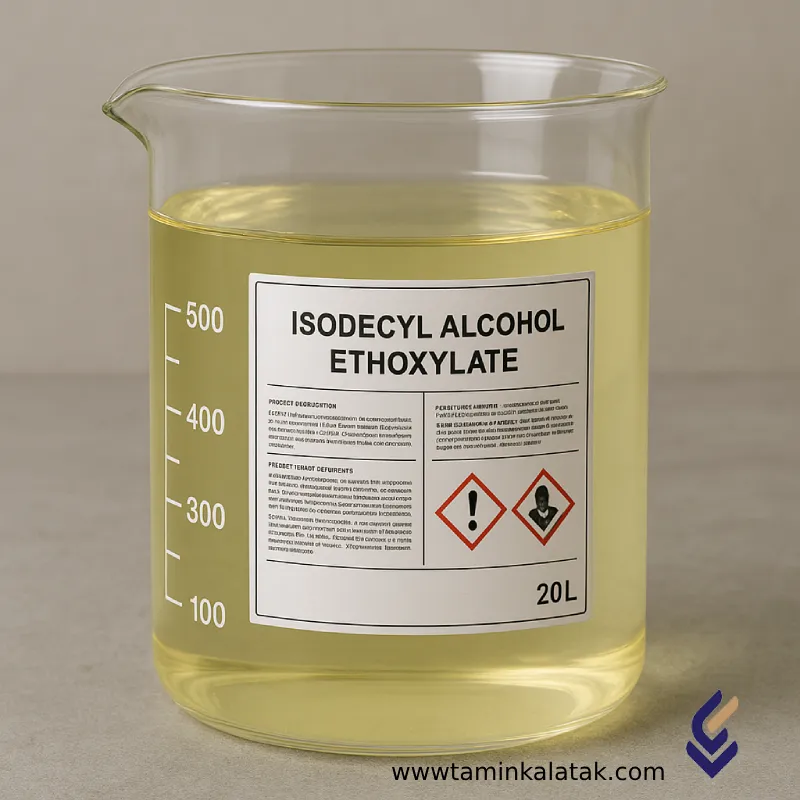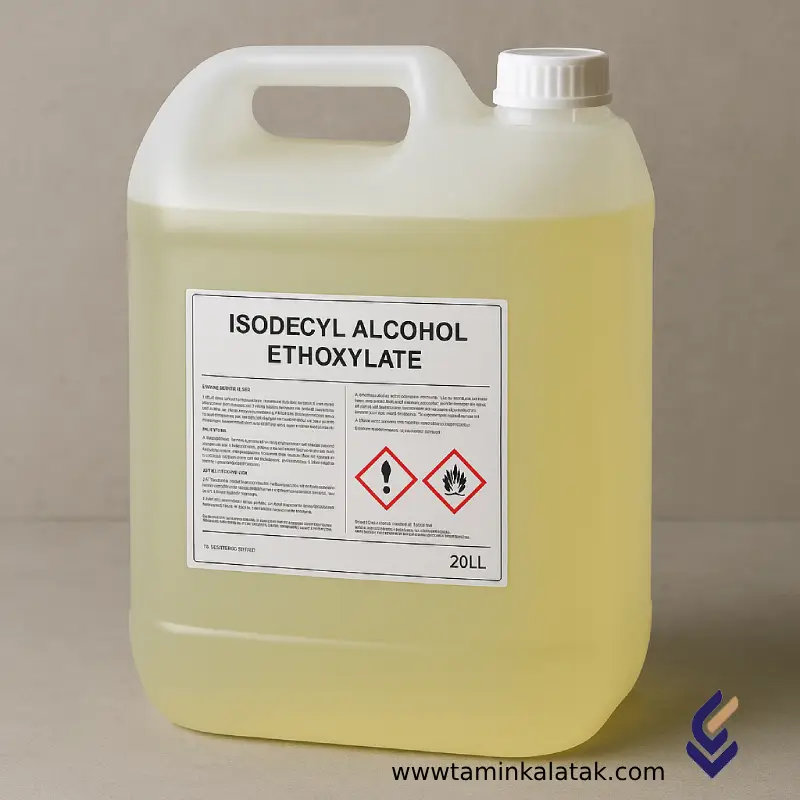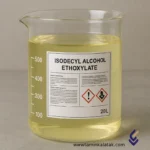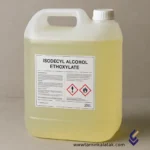Ethoxylated isodecyl alcohol
Isodecyl Alcohol Ethoxylate (IAE) is a nonionic surfactant belonging to the class of ethoxylated branched fatty alcohols. It is produced by the ethoxylation reaction between isodecyl alcohol (C10, branched-chain) and ethylene oxide (EO). Due to its unique molecular structure, it serves as an effective wetting agent, emulsifier, solubilizer, and dispersant in a wide variety of formulations.
Chemical Structure of Isodecyl Alcohol Ethoxylate
General Formula: R–(OCH₂CH₂)ₙ–OH
-
R: Branched isodecyl (C10) alkyl chain
-
n: Number of ethylene oxide units (typically between 3 and 10, or more depending on the grade)
The molecule consists of a hydrophobic branched isodecyl segment and a hydrophilic ethoxylated chain, giving it dual functionality. This structural balance makes Isodecyl Alcohol Ethoxylate a highly efficient nonionic surfactant with controlled foaming, excellent compatibility, and strong wetting performance.
Physical and Chemical Properties
| Property | Description / Value |
|---|---|
| Odor | Mild, similar to fatty alcohol |
| Surfactant Type | Nonionic |
| pH (1% solution) | Approximately 6–8 |
| Foaming tendency | Low to medium — ideal for low-foam industrial cleaning systems |
| Hard water stability | Excellent; resistant to Ca²⁺ and Mg²⁺ ions |
| Cloud point | 40–70 °C (depending on EO content) |
| Viscosity | Moderate; increases at lower temperatures |
| Thermal & chemical stability | High; resistant to hydrolysis, acids, and alkalis |
| Biodegradability | High (especially in natural, non-petroleum-based grades) |
| Compatibility | Excellent with anionic, cationic, and amphoteric surfactants |
| Flash point | May be flammable in solvent-based grades |
Applications of Isodecyl Alcohol Ethoxylate
Industrial and Household Cleaning
-
Effective wetting agent for hard surfaces
-
Used in low-foam industrial detergents and cleaners
Agriculture
-
Acts as an emulsifier and dispersant in pesticide and foliar fertilizer formulations
-
Enhances absorption of active ingredients through leaf surfaces by reducing surface tension
Textile and Dyeing Industry
-
Functions as a primary wetting agent during fiber preparation and dyeing
-
Serves as a co-emulsifier to stabilize aqueous pigment dispersions
Paints and Resins
-
Efficient dispersing agent in water-based paints, promoting uniform pigment distribution
-
Improves surface wetting and reduces surface tension in waterborne coatings
Advantages of Isodecyl Alcohol Ethoxylate
-
Controlled foaming, ideal for industrial systems
-
Excellent stability across a wide pH range and in hard water
-
High biodegradability (especially in natural-origin grades)
-
Superb compatibility with other surfactants (anionic, cationic, amphoteric)
-
Outstanding resistance to heat, acids, bases, and oxidizing agents
-
Enhances leaf absorption of active ingredients in agricultural applications
Disadvantages and Limitations
-
Certain grades may need to be blended with foaming surfactants for specific applications
-
May become cloudy or viscous at low temperatures (due to the cloud point effect)
-
Can cause skin or eye irritation at high concentrations
-
Solvent-based grades may be flammable
Applications
| Applications | , , , , , |
|---|
Ethoxylated isooctyl alcohol
| Products | Chemical formula | CAS number | Grade | Solubility in water | Vapor pressure | Melting point | Density (at 20°C) | Physical appearance |
|---|---|---|---|---|---|---|---|---|
| Ethanol and/or Isopropanol in 70% solution | C₂H₆O (ethanol) or C₃H₈O (isopropanol) | 64‑17‑5 (ethanol, 67‑63‑0 (isopropanol) | Sterile Grade (70% or less), Pharmaceutical/BP/USP – Sterilized and purified | (miscible) | Ethanol: 5.95 kPa (~44 mmHg); Isopropanol: similar | Ethanol: −114.1 °C; Isopropanol: −89 °C | Ethanol: 0.789 g/cm³; Isopropanol: 0.786 g/cm³ | Clear, colorless to slightly yellow liquid |










